-
Preparation
5 hours
-
Difficulty
Easy
Chưng cake is a traditional cake of the Vietnamese Tết holiday and there are many different types based on the characteristics of each region. Among them, we must mention the gù chưng cake – Hà Giang specialty, with the special aroma of ginger leaves mixed with sticky rice to wrap the cake. Let’s get cooking and make this chưng cake right away!
Ingredients for Hà Giang Gù Chưng Cake For 4 cakes
Sticky rice 1 kg Pork belly 800 gr Mung beans 700 gr (peeled) Ginger leaves 2 leaves Salt/pepper a little
How to choose fresh ingredients
How to choose good sticky rice
- For making bánh chưng, you can choose either ngỗng sticky rice, cái hoa vàng sticky rice, or Bắc sticky rice; each type of rice has different stickiness depending on its characteristics. However, good sticky rice usually has round, thick, short grains that are pearly white.
- You should select grains that are plump and uniform; if you press a grain with your nail and it doesn’t break easily, then it’s good sticky rice, and it should be fresh, not old rice which can spoil easily.
- New sticky rice usually has a characteristic fragrant smell, slightly sweet. Avoid buying sticky rice with musty, damp, or strange odors.
How to choose good pork belly
- Fresh and good pork belly has a light red or bright pink color, a slight sheen, and the layer of fat in between should be bright white, looking firm and tight. You should choose pork belly where the meat and fat are tightly attached to each other; when you pick it up, it shouldn’t feel too loose. The outer layer of skin and fat should be moderately thick, about 1.5 – 2cm.
- You can check the freshness of the pork belly by pressing on the piece of meat; if it has elasticity and doesn’t leave a dent, then you should choose that piece of meat.
- You should not choose pieces of meat that are pale, greenish, or have an unpleasant or strange smell.
- Additionally, to select pork belly for making bánh chưng, you should choose a piece with slightly more fat than lean meat so that it won’t be dry when eaten.
How to choose good mung beans
- For making bánh chưng, you should use peeled mung beans. When selecting peeled mung beans, make sure to choose shiny, bright yellow beans that are uniform in size and color.
- You can check the firmness of the beans by pressing your finger into a bean; if it is crispy, easy to break but doesn’t produce many small crumbs, then it is a good mung bean.
- Fresh mung beans usually have a light, characteristic aroma. Avoid purchasing beans that smell musty or have strange odors.
- Avoid selecting beans with black spots, dull colors, or uneven sizes. Particularly, do not choose mung beans that show signs of being eaten by termites or have many black specks.
How to choose dong leaves for wrapping bánh chưng
- Choose dong leaves that are elliptical, with large, wide leaf blades and a deep green color. Fresh dong leaves should have good elasticity, not brittle or easy to break. It’s best to choose medium-aged dong leaves, not too old or too young.
- Do not select wilted leaves that feel dry and stiff to the touch instead of soft and elastic like fresh leaves. Choose leaves that are intact, without any torn or damaged parts.
Information about rhizome leaves
What are rhizome leaves?
Rhizome leaves are the upper leaves that grow from the rhizome. They are stalkless, with sheaths, small elliptical leaves growing in two very benign rows. These leaves have no flavor and are crushed to extract juice for coloring dishes, especially bánh chưng.
Where to buy rhizome leaves?
You can find rhizome leaves at stalls that specialize in selling roots like ginger, rhizome, and turmeric at markets or at vegetable farms. If fresh rhizome leaves are unavailable, you can substitute them with powdered rhizome leaves, which are widely sold on e-commerce platforms.

Tools needed
Pot, bowl, dong leaf knife, lashing rope,…
How to make Ha Giang round sticky rice cake
-
Soak the sticky rice and mung beans
1kg of sticky rice, mung beans, wash gently with water about 3 – 4 times and then soak for 4 – 6 hours.
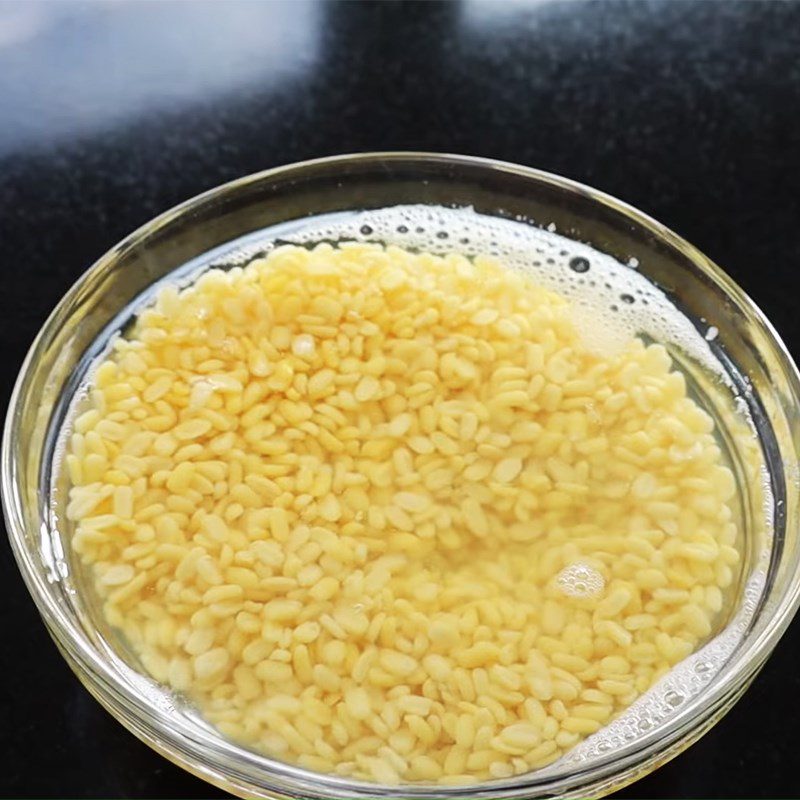
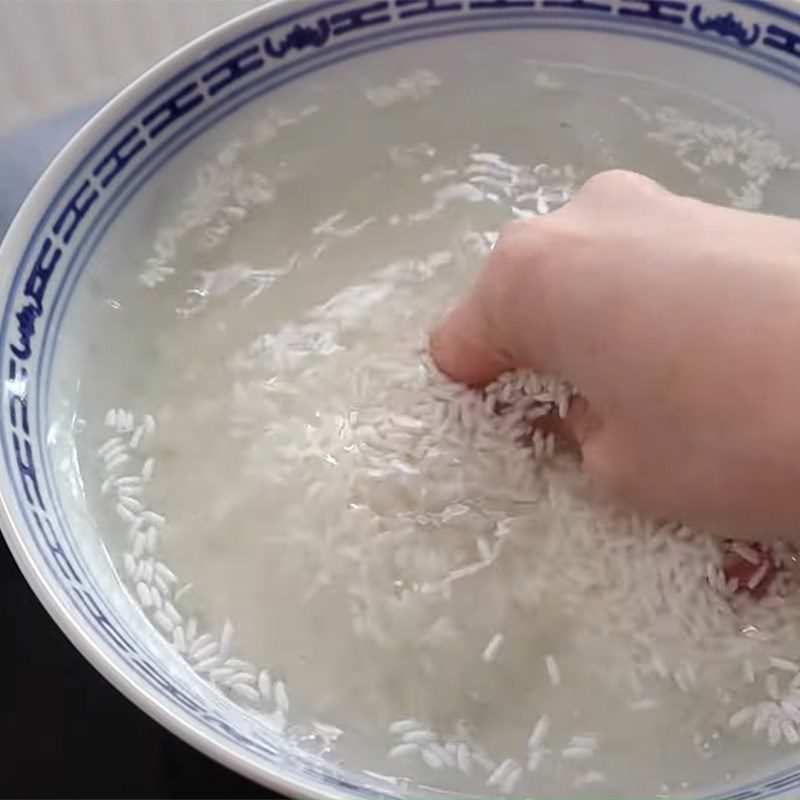
-
Prepare the ingredients
Wash the ginger leaves, chop them finely, then put them in a blender with a little water and blend until smooth. Then strain through a sieve to get the green juice.
Wash the pork belly under running water, then rub it clean with salt water, rinse again, then dry and cut into 4 equal pieces about 1 finger thick. Next, marinate the meat with a little salt and a little pepper.
Tip: Only marinate the meat right before wrapping the cake to ensure the meat stays fresh!Wash the dong leaves, dry them, and trim the hard, thick back spine of the leaves. Wash the bamboo strings and soak them in warm water for about 10 minutes.
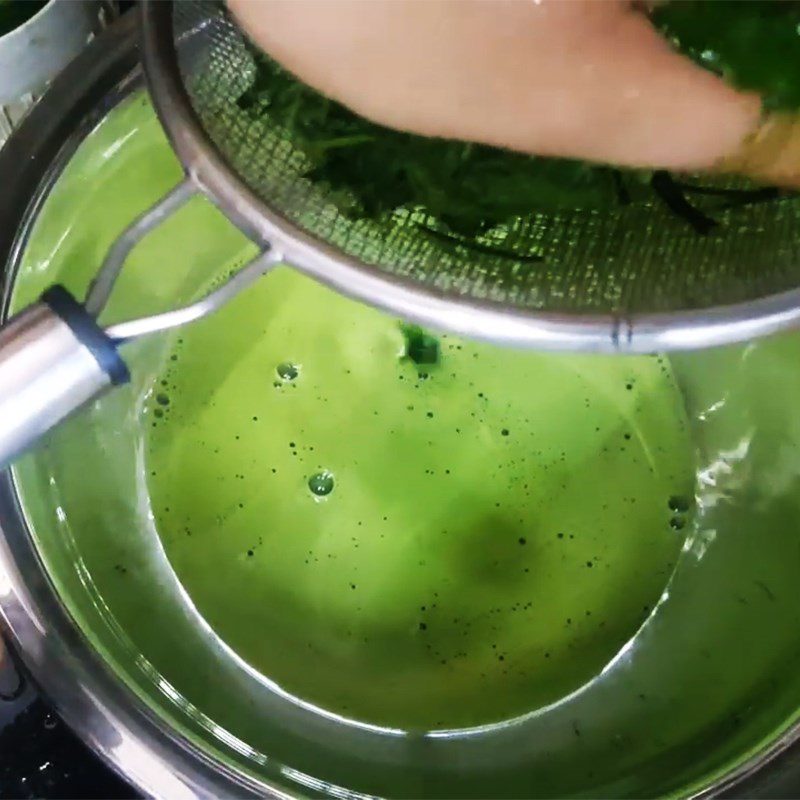
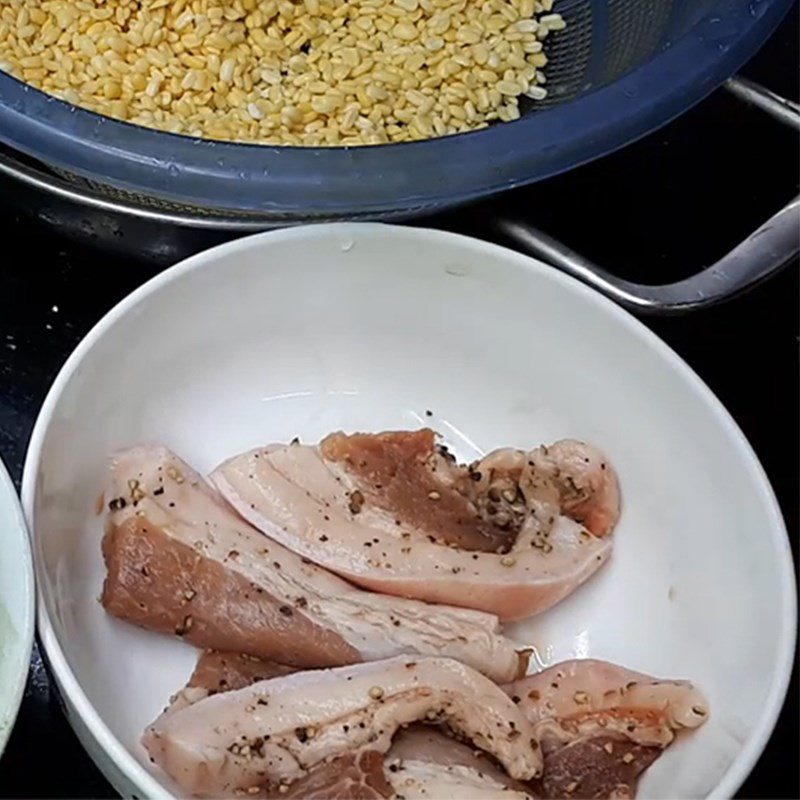
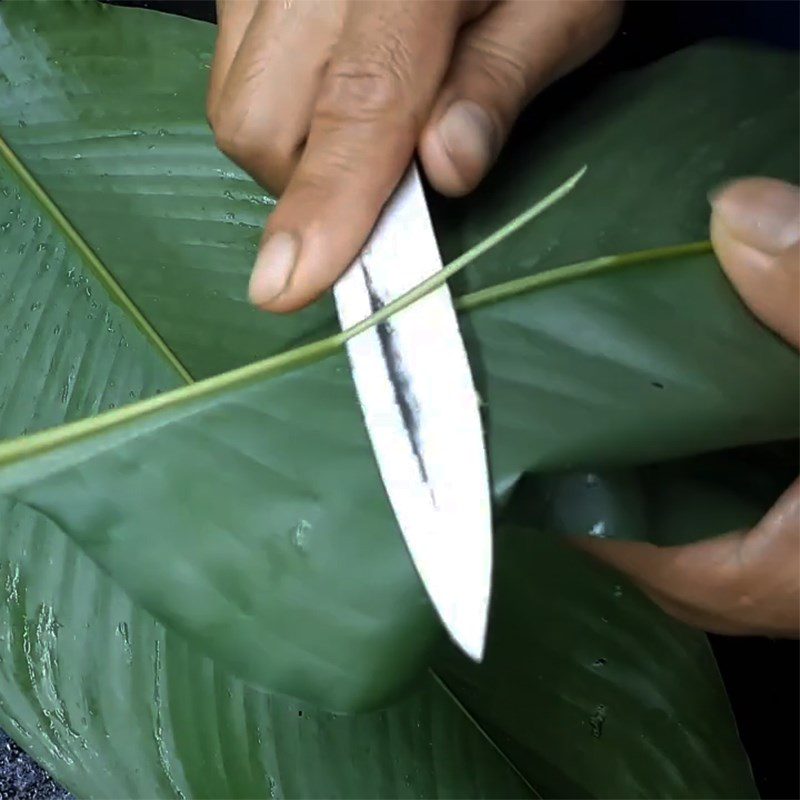
-
Mixing sticky rice color and marinating mung beans
You pour the ginger leaf water into the soaked sticky rice and mix gently. After mixing, let it sit for 7 – 10 minutes for the sticky rice to absorb the color.
Put the mung beans in a bowl, then add 1 tablespoon of salt, mix well, and let it marinate for 10 minutes.

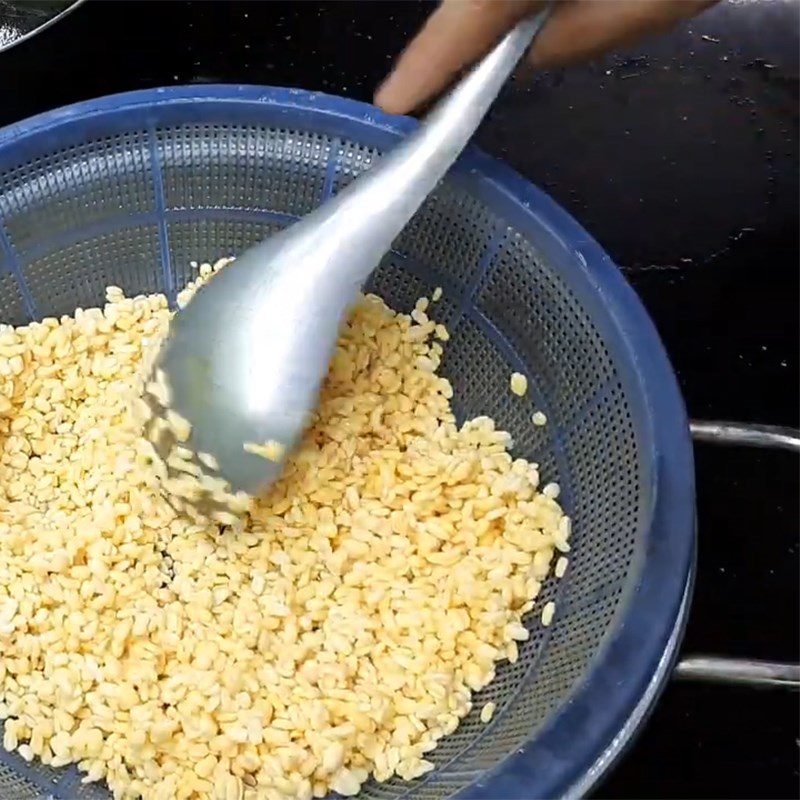
-
Wrapping the bánh chưng
You flip the back of 2 dong leaves, then overlap them head to tail. Next, take 1 tablespoon of sticky rice and place it in the middle of the leaves, followed by 1/2 tablespoon of mung beans and a piece of pork belly on top of the sticky rice. Then add another layer of mung beans over the pork, and finally a layer of sticky rice.
To wrap the cake, gather both edges of the leaves and fold tightly, then pinch one end of the dong leaf flat and tightly fold it to seal the filling. At this point, stand the cake up and gently pat it down to compress the filling, then do the same for the other end. You should wrap it so that the middle of the cake is raised.
Use a piece of bamboo string to wrap around the bánh chưng and twist it tightly to secure the cake. Each time you wrap, tie about 3 – 4 pieces of bamboo string.
Tip: You wrap the bánh chưng gù almost like wrapping bánh tét, but flatten both ends instead of wrapping it round like bánh tét.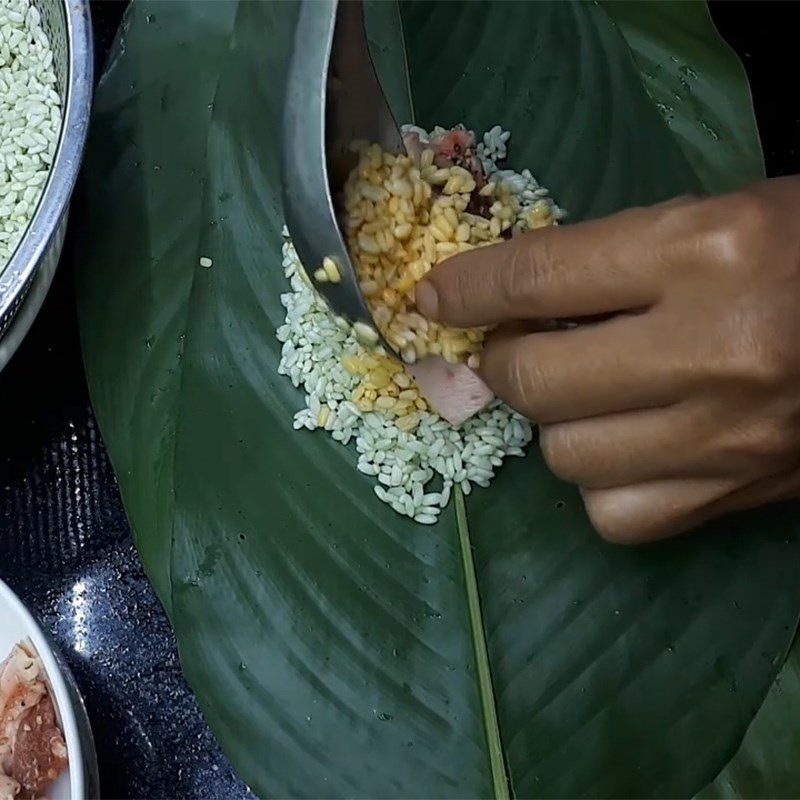
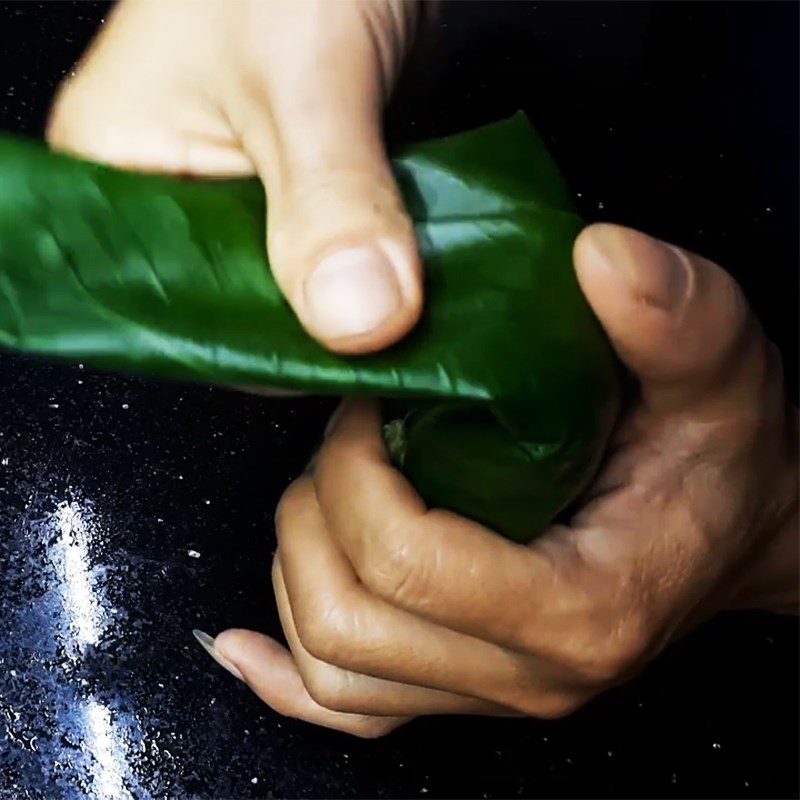
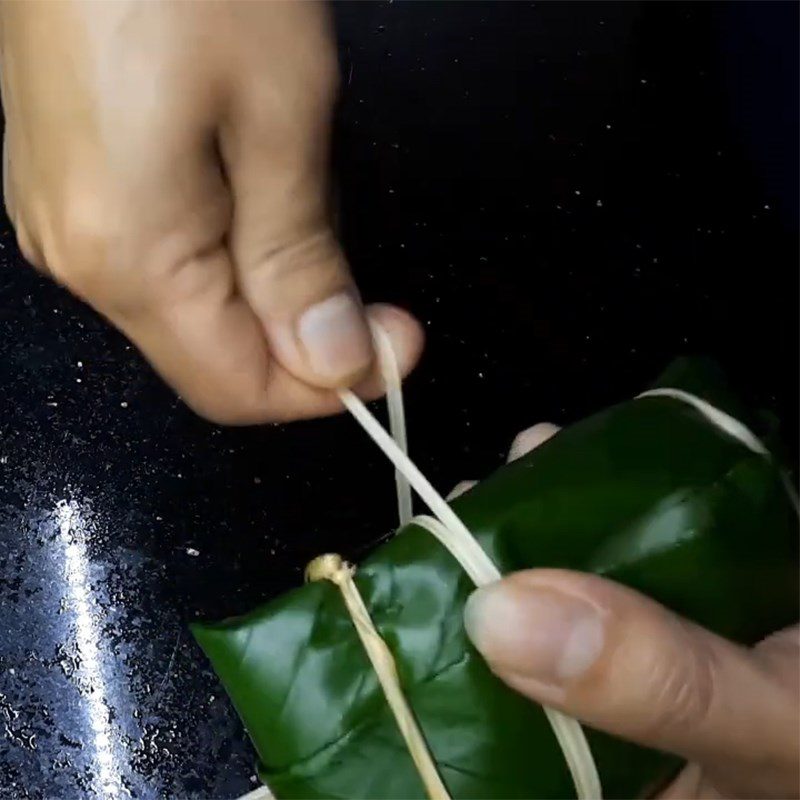
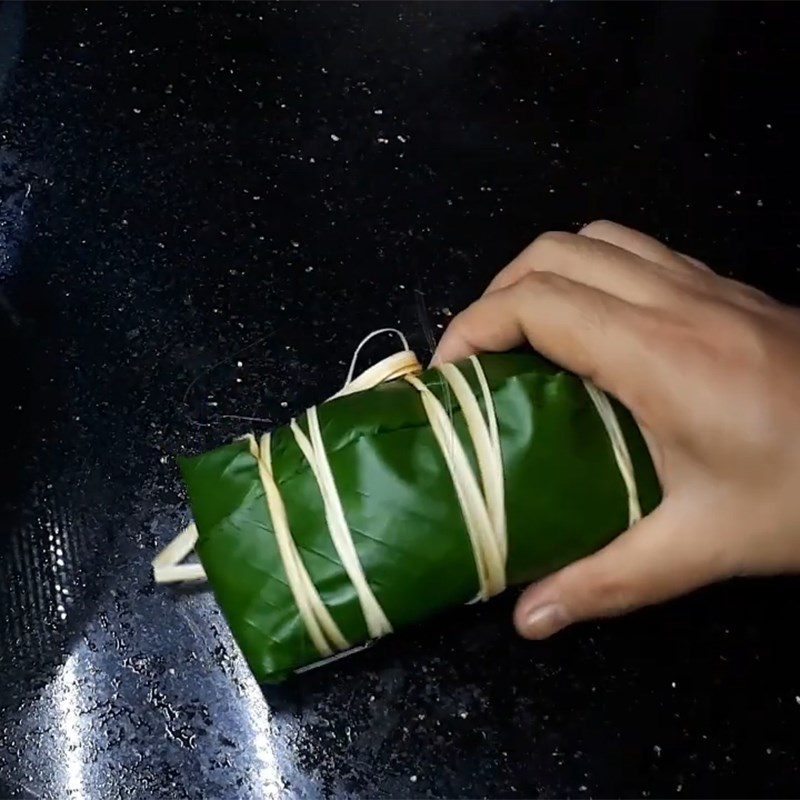
-
Boil the sticky rice cake
After wrapping, place the cakes in a large pot, pour boiling water to cover the cakes, then cover and cook on low heat for about 3.5 to 4 hours.
Note: While boiling the sticky rice cake, pay attention to add more water if you see that the water level is low. The sticky rice cake always needs to be submerged in water until cooked, this way the cake will be nicely green and delicious after boiling.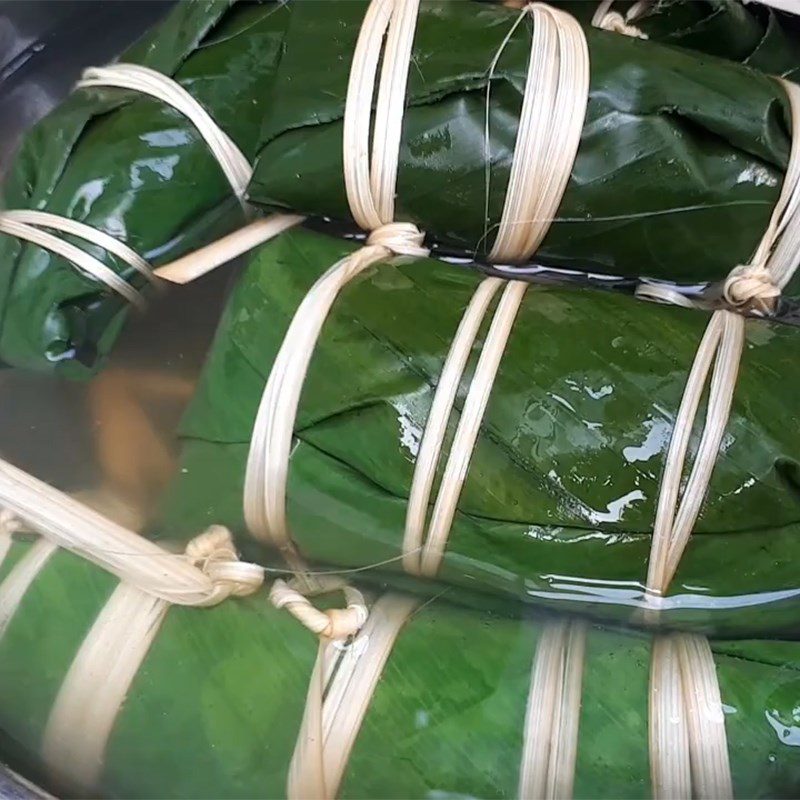
-
Final product
The Gù sticky rice cake is small and cute, with a distinctive shape and bright green color that is very eye-catching. The sticky rice filling is soft and fragrant, blended with the nutty flavor of mung beans and the fatty pork belly. A Gù sticky rice cake is not too big, so you can finish one in a single sitting. Remember to eat it with pickled vegetables to enhance the taste.

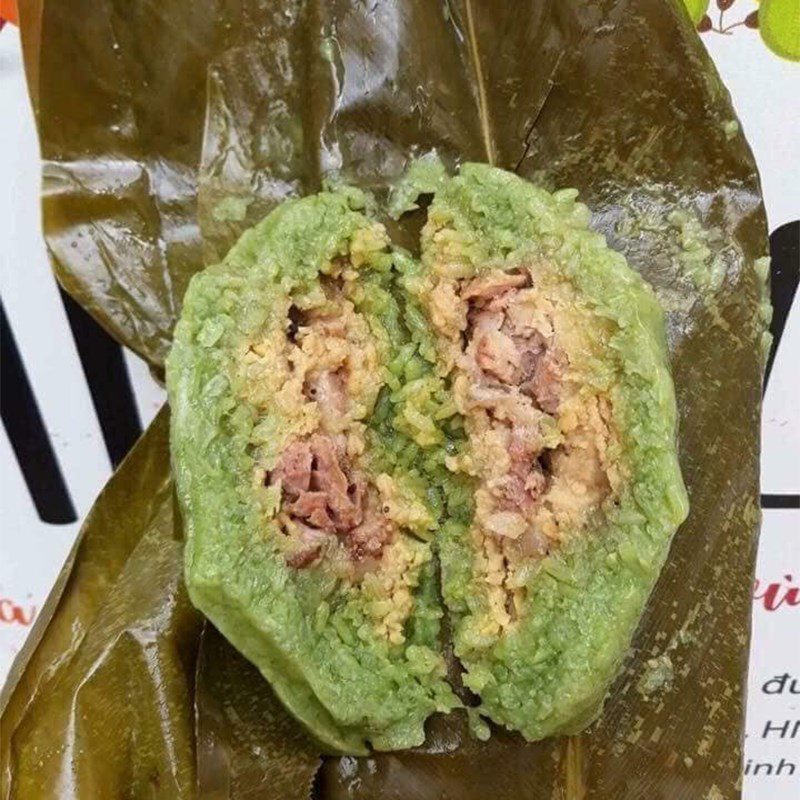
Tips for preserving round sticky rice cake without spoilage
- To keep the round sticky rice cake fresh for a long time, after boiling, let it dry completely or use a cloth to wipe off the excess water on the dong leaves.
- When not eating, keep the cake in a well-ventilated, dry place, away from other foods to avoid the growth of mold and mildew.
- If you use a knife to cut the cake, ensure the knife is clean, not contaminated with dirt or other food.
- If you have leftover cake after unwrapping, wrap it tightly in plastic wrap and store it in the refrigerator’s cool compartment. When you want to eat it, you can steam it again or fry it until crispy.
See more:
Hà Giang’s gù bánh chưng has a fragrant hint of ginger leaves and a beautiful fresh green color. With simple steps and a non-complicated wrapping method, you can easily prepare bánh chưng for the Tet holiday. Wishing you success in your preparation!









